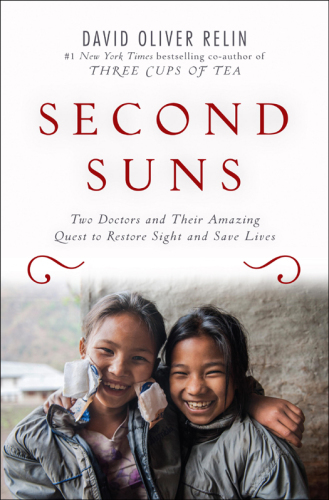
Second Suns
Two Doctors and Their Amazing Quest to Restore Sight and Save Lives
دو پزشک و پرس و جوی فوقالعاده آنها برای بازیابی و نجات زندگی
کتاب های مرتبط
- اطلاعات
- نقد و بررسی
- دیدگاه کاربران
نقد و بررسی

June 24, 2013
Two ophthalmologistsâGeoffrey Tabin in the US and his Nepal-based mentor, Sanduk Ruitâform the heart of this book, as Relin explores both men's decision to eradicate curable blindness with a particular focus in helping the people of the Himalayas. The book's contents will likely be overshadowed by the author's November 2011 suicide, as well as the controversies surrounding the accuracy of his previous co-authored best-seller, Three Cups of Tea. That's a shame, since Relin left behind a well-crafted, moving, and thought-provoking meditation on two men determined to implement the "single most effective medical intervention on earth" for as many of the world's poor as they could. Relin's portraits of the manic Tabin and the more resolute Ruit are captivating, and their odd-couple friendship is particularly interesting to read, creating a far more vivid portrait than the typical "living saint" approach. This book will leave readers not just in awe of the work Ruit and Tabin do, but also of the possibilities for earth-changing work available to any who are sufficiently determined.

June 1, 2013
The tortuous route of two intrepid eye doctors, one Nepalese, one American, in their journey to eradicate preventable blindness in the Himalayas. Journalist and co-author of another inspiring story of humanitarian accomplishment, the best-seller Three Cups of Tea, Relin, who died last year, pursued the two founders of the Himalayan Cataract Project, over several years as they established their partnership and shared mission. Sanduk Ruit, a Nepalese-born ophthalmologist, was profoundly unsettled by the high rates of preventable blindness in Nepal and returned to apply advanced techniques in microscope-directed cataract surgery he had gained under unconventional Australian eye doctor Fred Hollows. Modeling his eye-care mission for the legions of rural poor on Hollows' groundbreaking work among the Aboriginal population, Ruit pioneered the use of mobile units and surgical camps in Nepal's underserved rural areas to bring quick and efficient cataract surgery to the many poor people whose lives were ruined by preventable blindness. Attracting talented doctors from all over the world, notably the hyperactive mountaineer and Harvard-educated ophthalmologist Geoffrey Tabin, Ruit ignored his critics, who claimed the facilities were unsanitary or too costly to maintain, mastering the delicate surgery in an average of four minutes per patient, at a fraction of Western costs. Along with charitable funds from USAID and others, Tilganga, launched in 1992, expanded in 2009 and became self-sustaining by producing intraocular lenses; it has continued to thrive despite Maoist insurgency and massacre within the royal Nepalese family in 2001. The author, who evidently became a favorite of the doctors, even assisting in the hospitals, fashions a detailed, heartfelt account of the work of these dedicated pioneers. Doubly moving in light of Relin's own untimely death.
COPYRIGHT(2013) Kirkus Reviews, ALL RIGHTS RESERVED.

























دیدگاه کاربران